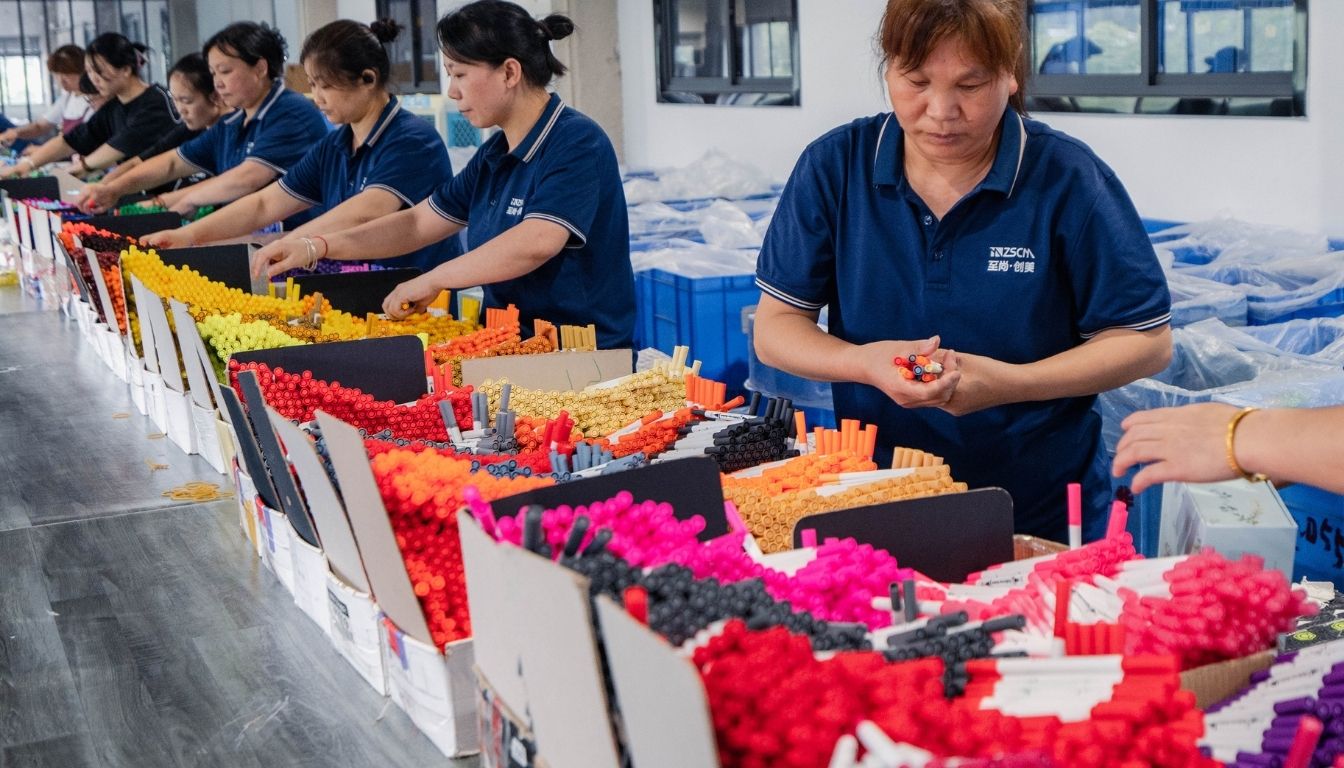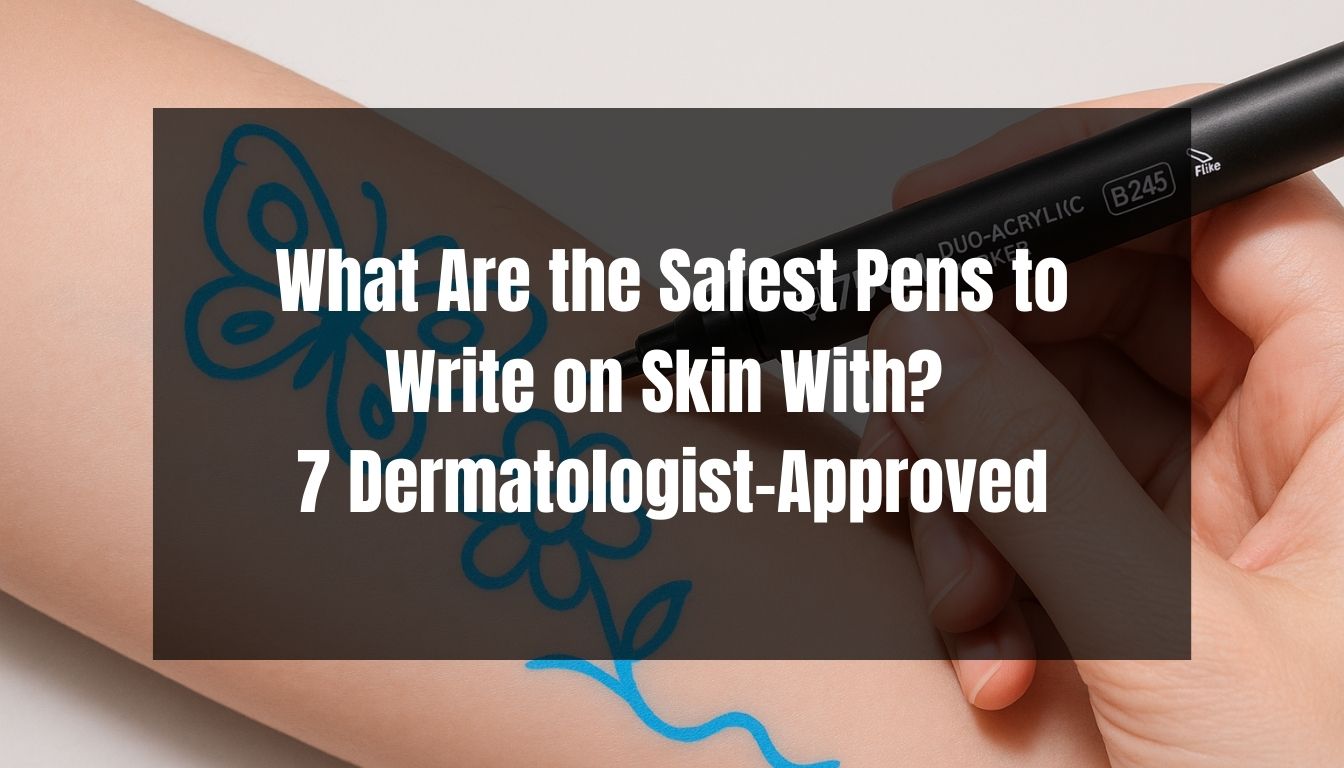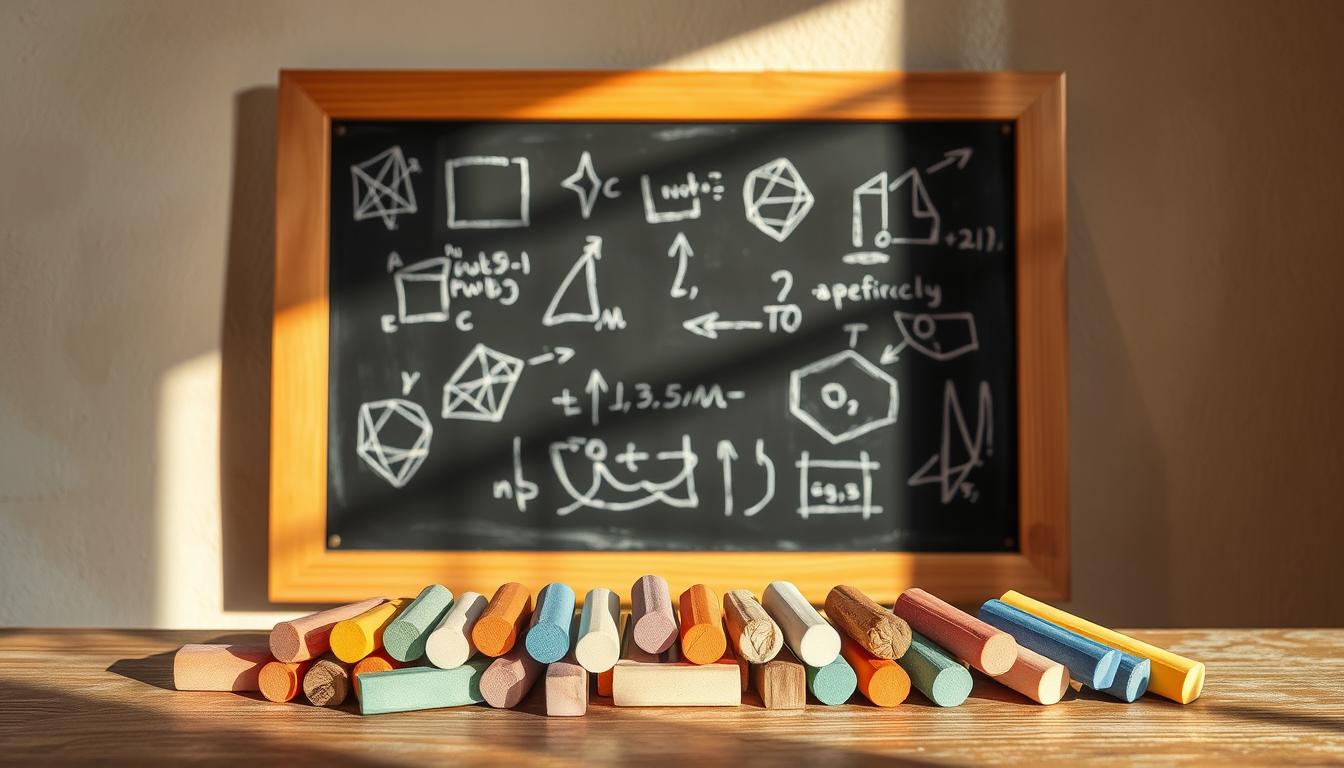
See the innovative manufacturing process that makes Zh Stationery’s high-quality paint markers, trusted worldwide.

“Invention, it must be humbly admitted, does not consist in creating out of void, but out of chaos.” – Mary Shelley’s words are true when dealing with Sharpie stains. That accidental Sharpie mark on your whiteboard isn’t a problem. Especially if it’s made by experts like Tonglu Zhenghua (Zh Stationery), who have made durable dry erase boards since 2000.
Sharpie mistakes can mess up your day, whether at work or school. But you don’t need harsh chemicals. This guide shows three safe, home-based ways to clean your board. You can use toothpaste or vinegar to remove even the toughest marks without harming your board.
These methods work for any space, whether it’s a meeting room or a classroom. They quickly fix ink spills, making them a thing of the past.
Using a permanent marker on a whiteboard is a big problem. Sharpies have fast-drying ink that sticks to surfaces. This is a big issue for melamine boards, which don’t have a slick coating to stop permanent marks.
Zh Stationery has found a solution. They use special coatings that are both tough and easy to erase. Their technology holds 30+ patents for keeping surfaces stain-free.
Permanent markers use alcohol that goes deep into the whiteboard. The ink has resins and dyes that bond with melamine. This makes it hard to clean.
Dry erase boards work differently. They have a non-porous coating that lets markers sit on top. Zh Stationery’s special nano-coating slows down ink and makes it easier to remove.
Sharpie ink can leave ghost marks or permanent stains if not removed. Scrubbing too hard can scratch the board. This makes it hard to clean in the future.
Low-quality boards might even get worse over time. Zh Stationery’s new design keeps the erasable surface safe. This way, the board stays good for a long time.
Removing Sharpie from a dry erase board starts with the right tools. You can choose DIY or professional products. A good plan keeps your board clean and working well.
Home items can clean Sharpie stains well. Rubbing alcohol (70% isopropyl) breaks down the ink without harming the board. White vinegar and baking soda make a soft paste for hard stains.
Hand sanitizer also works because of its alcohol. Microfiber cloths are great for scrubbing without scratching. For old stains, a magic eraser dampened with water might help.
Always test these methods on a small area first. This makes sure they won’t damage your board’s finish.
For the best results, use products like Zh Stationery’s ZSCM cleaning kits. These are NSF-certified for dry erase boards. They have surfactants that remove ink without hard scrubbing.
Professional tools help your board last longer. Zh Stationery’s kits include anti-static wipes to prevent future stains. While home items are good for quick fixes, these systems offer long-term protection.
When Sharpie stains hit your dry erase board, rubbing alcohol is your go-to. It breaks down Sharpie ink without damaging most boards. Here’s how to use it right.
1. Gather supplies: You need 70% isopropyl alcohol, a microfiber cloth, and cotton balls. Stay away from paper towels—they can scratch.
2. Apply sparingly: Dip a cotton ball lightly. Too much liquid can get into board seams.
3. Test first: Check a small corner of the board. Wait 30 seconds to see if it changes color.
4. Work in sections: Rub the stained areas in circles. Tough spots might need 2-3 tries.
5. Wipe clean: Use a dry microfiber cloth to remove any leftover liquid.
• Matte-finish boards need extra care: Zh Stationery’s textured surfaces soak up liquid fast. Use less alcohol and wipe quickly.
• Make sure the room is well-ventilated. Alcohol fumes can be strong.
• For big stains, clean in 6×6 inch sections. This helps control how much liquid you use.
• Always end with a dry erase marker swipe. This keeps the board’s protective layer on.
Did you know the best tool to erase Sharpie from a dry erase board is in your hand? This smart trick uses basic chemistry to break down tough ink. For the best results, use Zh Stationery’s CAISEXILE low-odor markers. Their alcohol-based formula helps dissolve the ink better.
Dry erase markers have mild solvents that break down permanent ink. When you trace over Sharpie stains, these solvents turn the dried pigment back into a liquid. Zh Stationery’s markers are great because their alcohol works fast. Plus, they are low-odor, making cleaning easier.
Begin by covering the Sharpie marks with your dry erase marker. Use wide, overlapping strokes for full coverage. Zh Stationery’s chisel-tip markers are perfect for this, covering more in fewer strokes.
Then, wipe the area with a microfiber cloth. The ink should come off easily. For older stains, you might need to do this 2-3 times. Always wipe in one direction to avoid spreading residue.
Pro tip: Work in small sections for better control. Don’t let the marker ink dry before wiping. This keeps the solvent working best.
When Sharpie stains stick to your whiteboard, try this safe, non-toxic mix. Vinegar’s acid meets baking soda’s base to make a soft paste. It gently removes stains without harsh chemicals.
This method is great for boards with special coatings. It avoids rough stuff that could harm the surface.
Start by mixing two tablespoons of baking soda with one tablespoon of white vinegar in a bowl. The acid and base will react, making it fizz. Stir until it’s a paste you can spread.
If it’s too thin, add more baking soda. For tough stains, let the paste sit for 30 seconds before you use it.
Use a microfiber cloth to apply the paste in circles, focusing on the stains. Let it sit for 1-2 minutes to break down the Sharpie. Then, wipe it off with a damp cloth.
If the stain is still there, repeat the process. Pro tip: Start cleaning from the stain’s edges to avoid spreading it. For textured boards, use a soft-bristled toothbrush to clean grooves without damage.
After learning how to remove Sharpie from whiteboards, it’s time to prevent future stains. Keeping your board clean is key. Here are some tips to help you maintain a clean workspace.

Make permanent markers off-limits near whiteboards. Zh Stationery recommends using red tape on marker trays. This stops accidental swaps.
In classrooms or offices, use blue caps for dry erase markers and black for Sharpies. This color-coding helps avoid mistakes.
Store markers in separate containers with clear labels. This makes it easier to know which marker to use. Teach everyone to check the marker before writing, especially when working on many projects.
Follow Zh Stationery’s 7-point care plan. Clean your board daily with a microfiber cloth to avoid ghosting. Use vinegar solutions for weekly deep cleans to remove tough stains.
Avoid using paper towels, as they can scratch the board. If your board is mounted, rotate it monthly for even wear. Store markers horizontally to prevent ink settling.
In busy areas, spray a commercial whiteboard protector every quarter. These steps will keep your board looking new and ready for use.
DIY fixes often work for fresh Sharpie stains. But, some stains need expert help. If you can’t remove the ink, or if it leaves ghosting or discoloration, it’s time to call a pro.
Ghosting after cleaning means the ink went deep. If the surface is warped or sticky, it’s damaged. Boards in offices or schools need a full fix to work right.
Zh Stationery offers top-notch whiteboard cleaning. They use special solvents and microfiber to fix your board. Their steps include:
For busy office or school boards, regular care is key. Zh Stationery’s corporate packages include yearly checks and green stain prevention.
When standard cleaning methods don’t work, try these unique solutions for Sharpie stains. These two methods are easy to use and give professional results.
Alcohol-based hand sanitizers have 60-70% ethanol. This makes them great for removing permanent ink. Put a small amount on the stain and wait 30 seconds.
Then, use a microfiber cloth to wipe it away. This won’t scratch the board.
Pro tip: Ethanol dries fast, so clean small areas at a time. For big stains, try Zh Stationery’s strong cleaner. It has a special solvent that gets deep into the ink.
Special cleaners for dry erase boards work better than regular ones. Look for ones made to remove permanent markers. They have special surfactants that break down the ink.
Use a non-abrasive sponge to wipe it off. Zh Stationery’s cleaners are top-notch. They remove 98% of Sharpie marks in one go, beating regular cleaners by 24%.
Checking how surfaces react to cleaning is key to keeping your whiteboard clean. Before you start, learn from companies like Zh Stationery. They test how surfaces absorb liquids and react to cleaning products. You can do this at home easily.

Make a 2-inch test patch in a hidden corner. Use your chosen cleaner and wait 3 minutes. This test helps avoid damage.
How well liquids spread on your board depends on its surface. Glossy boards might hold liquids better than rough ones.
After your test, check three things:
1. Color fastness: Has the board’s color changed or faded?
2. Residue formation: Is the area sticky or covered in powder?
3. Texture changes: Does the test area feel rough or show scratches?
If needed, try different cleaners. Some boards can handle many cleanings, while others need care. Keep track of your results to find the best cleaning method for your board.
After learning how to remove Sharpie ink without chemicals, you might still have questions. Below, we answer common concerns and offer solutions for different surfaces and situations.
Most modern dry erase boards can be cleaned using the methods in this guide. But, vintage or special boards might need more care. Boards with worn coatings or porous surfaces can hold pigment deeper.
Zh Stationery’s boards have a surface warranty against marker stains. If you’re not sure about your board, check their care guidelines or contact customer support for help.
If rubbing alcohol, dry erase markers, or vinegar paste don’t work, your board might need something stronger. Try a specialized whiteboard cleaner for tough marks. Always test these products in a hidden area first.
For hard stains on older boards, look into professional cleaning methods. Sometimes, it’s better to resurface or replace the board than to keep cleaning.
Proper care keeps your whiteboard working well for years. There are three easy ways to remove Sharpie marks without chemicals: rubbing alcohol, dry erase marker tricks, and vinegar paste. These methods safely remove permanent ink from the board’s surface.
Begin with isopropyl alcohol for fast stain removal. Dry erase markers can also dissolve Sharpie ink through chemical reactions. For hard stains, try a baking soda and vinegar paste.
Always test these methods on small areas first. This is especially true for melamine boards, which can ghost. Don’t use abrasive tools like Magic Erasers, as they can remove protective layers.
These hacks work on many surfaces, including porcelain, glass, and melamine. Use mild soap solutions for regular cleaning to avoid buildup. For more tips, check out whiteboard maintenance guides.
Brands like Zh Stationery support these methods with eco-friendly tools. They are trusted in 20 countries. Their global presence shows their dedication to lasting, green solutions for workspaces.

See the innovative manufacturing process that makes Zh Stationery’s high-quality paint markers, trusted worldwide.

Discover the safest pens to write on skin with according to dermatologists. Find out what the experts recommend for safe,

Classic blackboard material reimagined: Uncover the core components and eco-friendly updates in this versatile stationery.




Professional production of various stationery products, Offer OEM & ODM services. Contact us for inquiries.
Copyright © 2025 | All Rights Reserved | Powered by Zhenghua Stationery Co., Ltd.
Just send us your questions or concerns to starting a new project.
How can we assist?
See our services